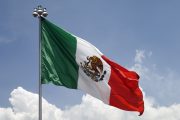
Nearly two weeks after President Trump announced the conclusion of a new negotiated trade agreement with Mexico, Canada may be close to striking a deal with the United States, ensuring that the new NAFTA remains trilateral.
Ahead of her meeting with U.S. Trade Representative Robert Lighthizer, Canadian Foreign Minister Chrystia Freeland continued to remain optimistic about reaching a new NAFTA agreement with the United States soon.
Contention between the two nations persist over Canada’s milk and dairy tariffs. The United States wants to eliminate or significantly reduce them in order to open Canadian markets to U.S. dairy farmers, while the Canadian dairy lobby is pressuring its government to keep the duties on milk and dairy imports.
Disagreement also remains over the Trudeau government’s desire to keep NAFTA’s Chapter 19 international settlement dispute provision, which the Trump administration wants to do away with.
Despite these apparent polarizing objectives, an unidentified Canadian source told Reuters that it was quite possible that the ongoing negotiations would conclude by the end of September.
President Trump hoped to have reached an agreement with Canada by last Friday, in order for the current out-going Mexican President Enrique Peña Nieto to sign the agreement.
Under the current Trade Promotion Authority, also known as “fast track,” the executive branch has to give Congress 90-days notice for an intention to sign. On December 1, Mexico’s radical leftist President-elect Andrés Manuel López Obrador (AMLO) will be sworn in, making November 30 Peña Nieto’s last full day in office.
Ninety days prior to November 30 would have been Saturday, September 1. Instead, the Trump administration sent a letter to Congress the day before, on Friday, August 31, notifying it of its intention to sign an agreement reached with Mexico earlier that week.
Trump has repeatedly warned Canada that he will proceed with the deal that presently excludes Canada, which he calls the “United States-Mexico Trade Agreement.”
Although the text of the new U.S.-Mexico Trade Agreement has yet to be released, it will likely be made public and posted on the office of U.S. Trade Representative’s website on Sunday, September 30, 2018 — 30 days after the president’s official notice to Congress of his intention to sign.
In the unlikely event that the United States and Canada fail to arrive at a new agreement, thus leaving the agreement a bilateral one between the United States and Mexico, then its ratification might not fall under the umbrella of the president’s Trade Promotion Authority. Instead, it could be treated as a new agreement, according to lawmakers.
“To use Trade Promotion Authority’s ‘fast-track’ procedures, the administration must also reach an agreement with Canada. NAFTA was a tri-party agreement only made operative with legislation enacted by Congress,” Senator Pat Toomey (R-Penn.) said in a statement released on August 28, 2018.
“Any change, such as NAFTA’s termination, would require additional legislation from Congress. Conversion into a bilateral agreement would not qualify for TPA’s ‘fast track’ procedures and would therefore require 60 votes in the Senate,” Toomey explained.
If Republicans retain at least 50 seats in the Senate in the upcoming mid-term elections this November, they could approve a new NAFTA deal with Canada next year, with Vice President Mike Pence casting the tie-breaking vote and without a single vote from the Democrats.
Should Canada fail to reach an agreement, the president may need the support of Democrats to reach the 60-vote threshold in order to approve a new U.S.-Mexico Trade Agreement.
However, congressional Democrats are saying that if they win a majority in the House of Representatives, this November, they will oppose any NAFTA replacement agreement that excludes Canada.
Democratic lawmakers favor a trilateral agreement over a possible bilateral replacement.
Those concerned about the sovereignty-draining aspects of NAFTA should be aware that a hypothetical bilateral NAFTA replacement would not be a step away from regionalism or globalism. All modern conventional “free trade agreements” are made under the Marrakesh Agreement establishing the World Trade Organization (WTO), meaning that they are not “free trade” in the classical sense, rather globalist-managed trade schemes building world government.
The post-World War II international trade regime established with the creation of the General Agreement on Tariffs and Trade (GATT) has been the economic cornerstone for the Deep State’s new world order. And NAFTA is an integral part of that system.
When NAFTA was originally before Congress in 1993, former Secretary of State and key Deep State apparatchik Henry Kissinger observed the following in an opinion piece he wrote for both the Los Angeles Times and Washington Post:
The revolution sweeping the Western Hemisphere can point the way to an international order based on cooperation. It is this revolution that is at stake in the ratification of NAFTA. What Congress will soon have before it is not a conventional trade agreement but the hopeful architecture of a new international system. [Emphasis added.]
This month should prove to be an interesting one, as both the release of the text for the U.S.-Mexico Trade Agreement and a new agreement with Canada are expected by the end of the month.
In the interim, it would behoove those concerned about the loss of their nation’s national sovereignty to contact Congress and the president and ask for the formal U.S. withdrawal and termination of NAFTA, as well as opposition to any new trilateral or bilateral agreements made under the auspices of the World Trade Agreement and GATT.
Ultimately, nothing good will come out of any trade agreement in which the United States trades away Congress’ constitutional authority to regulate commerce and set tariff rates, and that trades away the country’s national sovereignty.
Photo: Clipart.com





